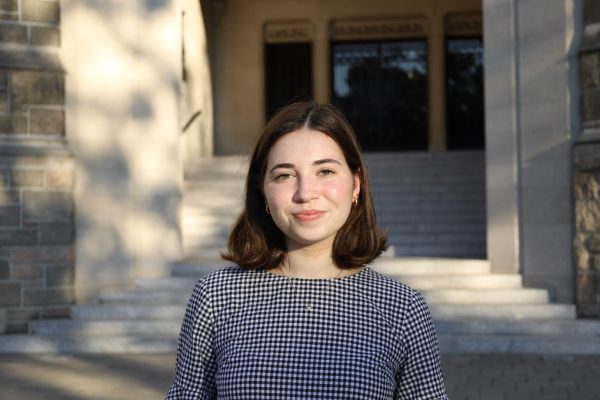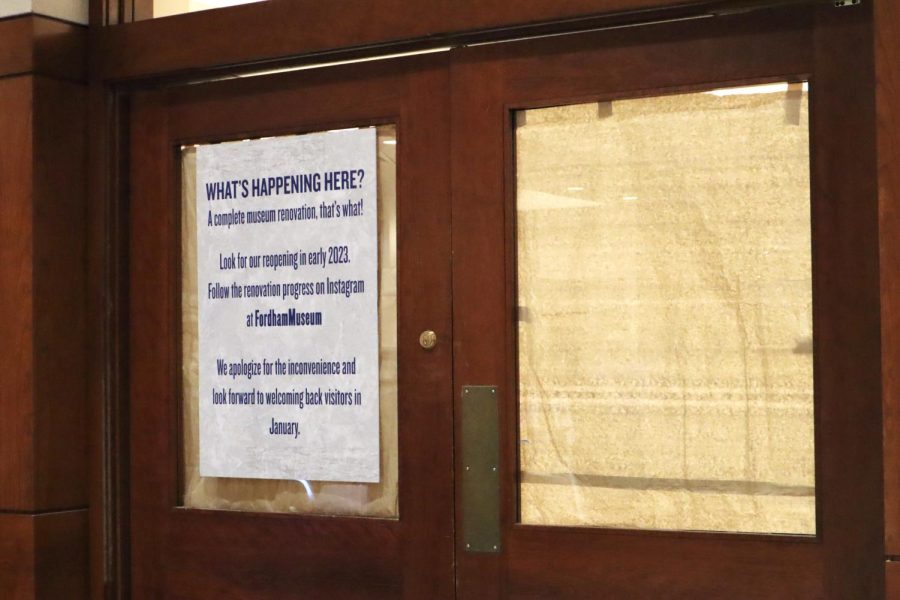Walsh Library Museum Gets a Facelift
Fordham University’s antiquities museum, located in the William D. Walsh Family Library, is currently undergoing renovations and is projected to reopen in January 2023. The museum first opened in 2007 after alumnus William D. Walsh gifted over 200 pieces to the university. The renovation is the first time the museum has undergone restoration since its opening.
Although the museum is home to unique collections and serves as a resource for Fordham students, many students overlook its distinctiveness. Jennifer Udell, curator of university art at Fordham, commented that university tour guides often overlook the museum while giving tours to prospective students. She said while giving tours, they often describe the museum as a quiet place to study rather than acknowledge it as a unique campus resource.
“What’s important about the museum is that we’re the only university in NYC that has a teaching collection of antiquities for undergraduates,” said Udell.
In 2021, the Manhattan district attorney’s office seized 99 artifacts from the university museum. The artifacts are linked to Edoardo Almagà, an antiquities dealer, who was accused of illegally transporting relics from Italy to the U.S. The antiquities, valued at $2 million, were returned to Italy. All of the pieces seized were donated by William D. Walsh, who, unaware of their origin, bought the collection in good faith. With the loss of the antiquities, the museum was left with numerous empty cases, prompting the renovation process.
“The impetus was 2021, and the renovations began this summer with the demolition of the existing display cases, refinishing of the floors and now what’s happening is there’s some electrical work being done and the new cases are going to be delivered and installed,” said Udell.
Renovations began in summer 2022, and the remaining pieces were de-installed and placed in storage. Once renovations are done, as many as 400-500 pieces will be put on view: mosaics, sculptures, Roman coin and new antiquities such as a collection of bronze and terracotta figurines and Roman glass.
Udell is currently working with the Metropolitan Museum of Art to acquire standard loans and the Hispanic Society of America to acquire long-term loans for various pieces.
Udell is also negotiating long-term loans with Italy regarding the antiquities they seized during the repatriation. Acquiring these loans will allow the university to enter into an agreement with the lending institution for a number of years while a standard loan period typically extends to six months.
“While they have every right to seize the object, they’re not all that exceptional in respect to what Italy has in their own museums. They’re likely going to be amenable to lending us some of the stuff that they took,” said Udell.
Although 99 objects were returned to Italy, Udell commented on the remaining significance of the museum, especially for students: “It [the seizure of 99 objects] doesn’t mean that it makes the collection any less valuable for students. It’s a real-life experience of what it means when you take on a collection like this.”
Udell described the renovation as “a whole reactivation of the gallery.” When the museum reopens, visitors will be able to admire new, custom-built display cases, polished floors and numerous culturally-rich permanent collections. Before the renovations, the museum hosted university-related affairs such as Board of Trustee events. After the renovations, the university will be able to resume hosting events in the museum, and visitors will be able to admire the museum’s new look.
Udell noted that the experience post-repartition was a part of the learning process; the university had to confront the problem of going about antiquity-collecting ethically.
“There’s a lot left, we still have a museum. It’s different, but it’s still a museum with a lot of interesting material,” said Udell.

Sofia Donohue is a senior from Kensington, Md., who is majoring in English with a double minor in history and Italian. She first joined the Ram as a digital...







































































































































































































